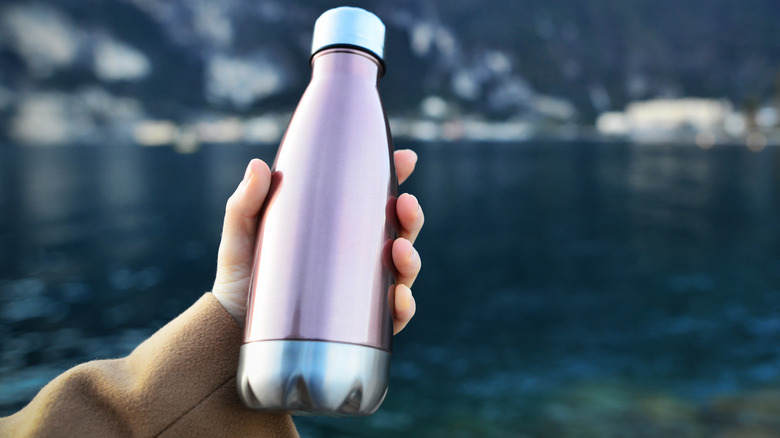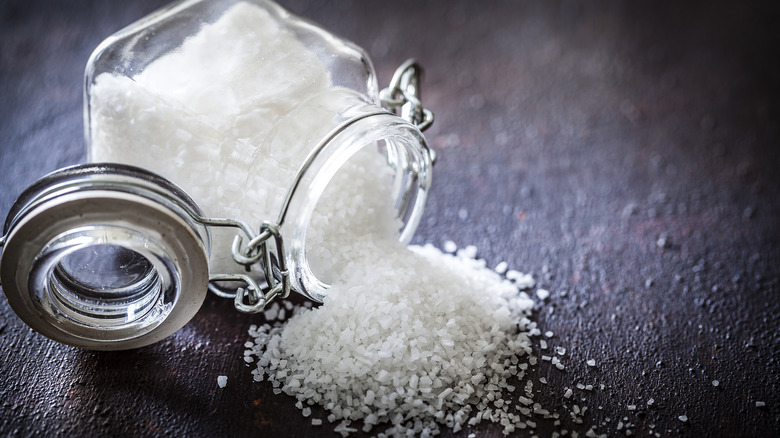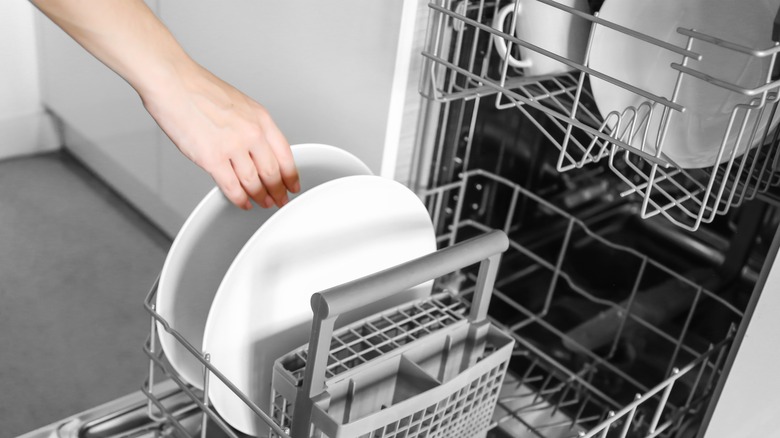How To Clean A Thermos With Ice And Salt
A thermos can be a handy all-purpose tool for carrying around your coffee, water, or even a hearty serving of chicken noodle soup for lunch on a cold day. But if you plan to use it for various purposes, it's even more important to know how to clean it thoroughly. This ensures that your water doesn't taste like coffee and your tea doesn't taste like soup. However, cleaning these narrow-necked bottles can be a challenge.
While many people recommend a range of household items for cleaning thermoses — from denture tablets and white vinegar to baking soda and boiling water — there is one method so easy you could probably do it right now. You don't even have to go to the store or rummage in the back of your pantry. All you need to clean your thermos is a little table salt, a few ice cubes, and a good, solid shake.
The ice and salt method
To employ the ice-and-salt method, add two to three tablespoons of salt and a handful of ice to your thermos. Fill the thermos about halfway with ice to allow it room to move. Crushed ice works best, but small ice cubes are also effective if your fridge lacks a built-in ice machine. If needed, you can place the ice in a plastic bag and crush it with a blunt object on a surface that won't be damaged. Once prepared, seal the thermos and shake it as if making a really weak martini.
The reason this combination works as a cleaning method is twofold. The salt's antibacterial properties aid in cleaning your thermos, while the ice and salt together help eliminate any lingering stains in hard-to-reach corners. After cleaning, rinse your thermos to remove any residual salt and finish with a microfiber cloth or bottle scrubber, if necessary.
How not to clean your thermos
You may be tempted to toss your thermos into the dishwasher, but be warned: Not all thermoses are dishwasher-safe, and it's often difficult to determine if yours is. Even if it's deemed dishwasher-safe, hand washing is usually recommended anyway. The high heat from a dishwasher's heating element, especially on the bottom rack, can compromise the seal of your thermos, leading to future leaks and a less-than-hot beverage.
Lastly, proper cleaning procedures vary depending on your thermos type. For example, stainless steel tends to retain flavors and odors because its surface is porous. Therefore, avoid using harsh chemicals like bleach, which could not only damage your thermos but also cause unpleasant tastes and smells to linger — you don't want your morning tea to taste like pool water instead. Even plain boiling water can damage your thermos or inadvertently create a strong vacuum seal. This makes the ice-and-salt method both safer and more effective.



